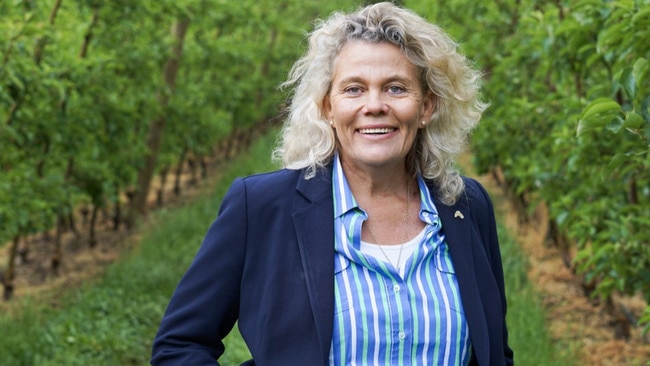NFF: Aussie super funds shouldn’t be forced to invest in agriculture
Foreign investment, value-adding, and just how to reach that $100 billion target for ag? Here’s how National Farmers’ Federation president Fiona Simson and other industry experts want to achieve the ambitious goal.

FORCING Australian super funds to invest in agriculture is not the answer to the driving more home-grown support for the sector, farming leaders agree.
While more investment is going to be critical to agriculture reaching its lofty goal of $100 billion by 2030, a suggestion super funds should be mandated to invest is not the way to go about it, National Farmers’ Federation president Fiona Simson said.
“We need capital – the opportunities in front of us are such that there is nowhere near enough capital and it’s always a hard thing (to attract) when you need to expand,” she said.
“But mandating is a very strong word. Should we be telling people what they should be investing in? No, I don’t think we should.”
Her comments came during The Weekly Times VirtuAg web panel today, which explored how agriculture was tracking to achieve its ambitions of reaching $100 billion value in the next decade.
The sector is currently worth about $60 billion at present; investment is seen as crucial for the sector’s growth, but interest from Australia’s $2.7 trillion superannuation industry is still lacking.
Australia’s biggest foreign investors in agriculture are Canadian and US pension funds.
Ms Simson’s comments were backed by Agribusiness Australia director Georgie Aley, who added clarity could be used on other pathways for funds to invest in, such as in value-adding, rather than “just on farmland in its own right”.
Commonwealth Bank’s general manager for agribusiness Adrian Parker said Aussie funds were increasingly investing in agriculture, but at the other end of the supply chain.
“They are participating close to the customer and the brand so there is less volatility,” he said.
Tuesday’s federal budget was broadly welcomed by both Ms Simson and Ms Aley, who said it “signalled strong support for the sector, without a doubt”.
All three agreed value-adding to agriculture would be necessary for agriculture to reach its targets.
“We have to be smarter about what we do. We’re moving from a time in history when Australian farmers just grew a bulk commodity … now farmers are more actively engaged in what they grow,” Ms Simson said.
“The margins are very tight, it’s not a level-playing field (globally) … the more you can remove that barrier or dictate what you collect as your price, is going to collect you more value on your farm.”
Ms Aley conceded the NFF’s 2030 goal “wasn’t fully welcomed with open arms” when it was first announced, but had since been embraced by the whole sector as it gave agriculture “a vision to aspire to”.
She said the whole supply chain needed to work together to realise the sector’s value-adding opportunities.
Mr Parker warned value-adding would mean not all aspects of the supply chain would grow at the same pace, particularly for the manufacturing side.
He predicted abattoirs and sites such as Manildra’s mills would continue to expand to deliver larger economies of scale.
“We can’t be all things to all people, we’ve got to start thinking about those participants that will continue to get bigger and need more investment,” Mr Parker said.
“One of those is aggregators and manufacturers will need to get bigger and the weaker ones will fall away, but that will be a natural response (to market forces).”
The Weekly Times VirtuAg webinar series continues in a discussion with Federal Agriculture Minister David Littleproud, next Friday, October 16. Register here.


